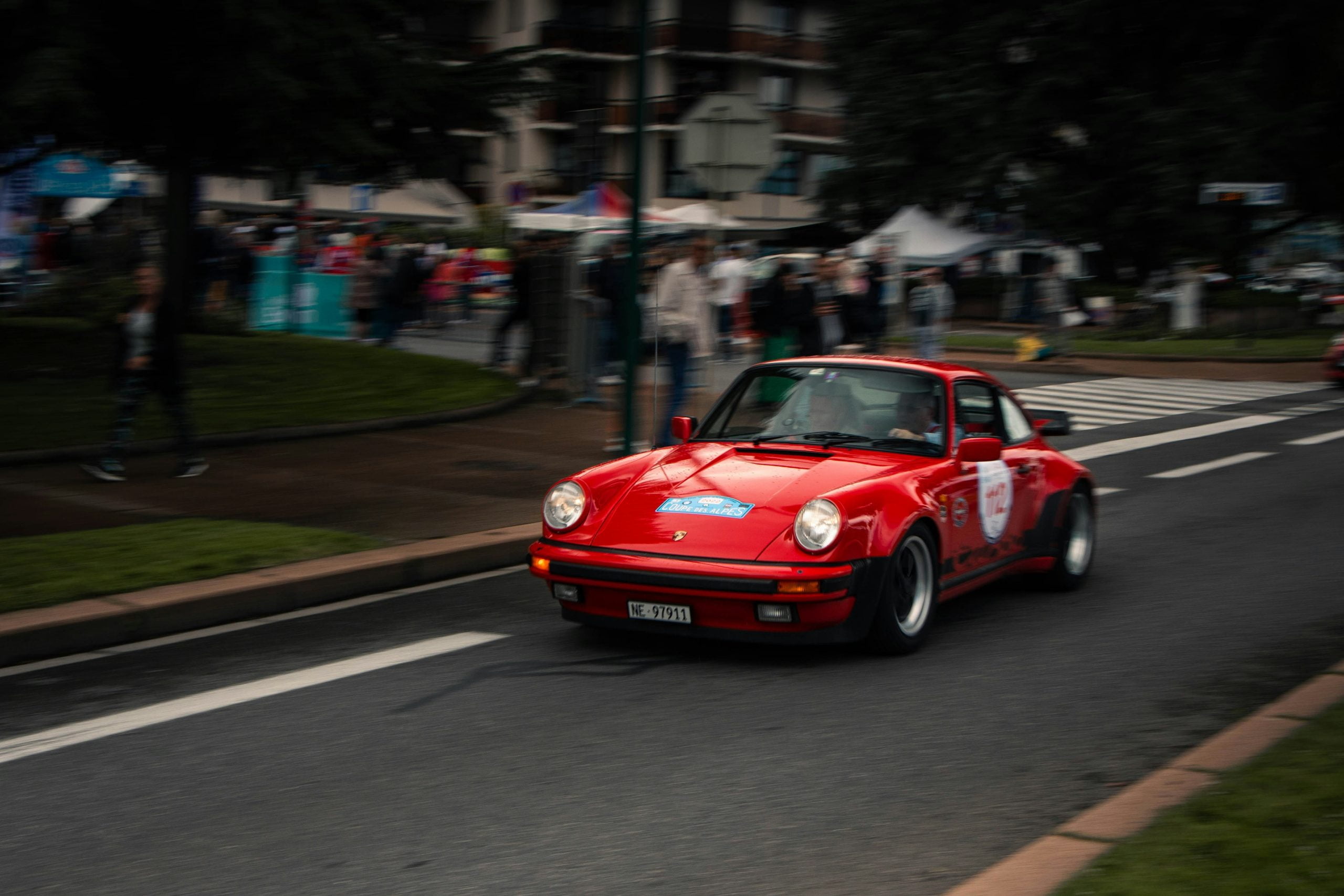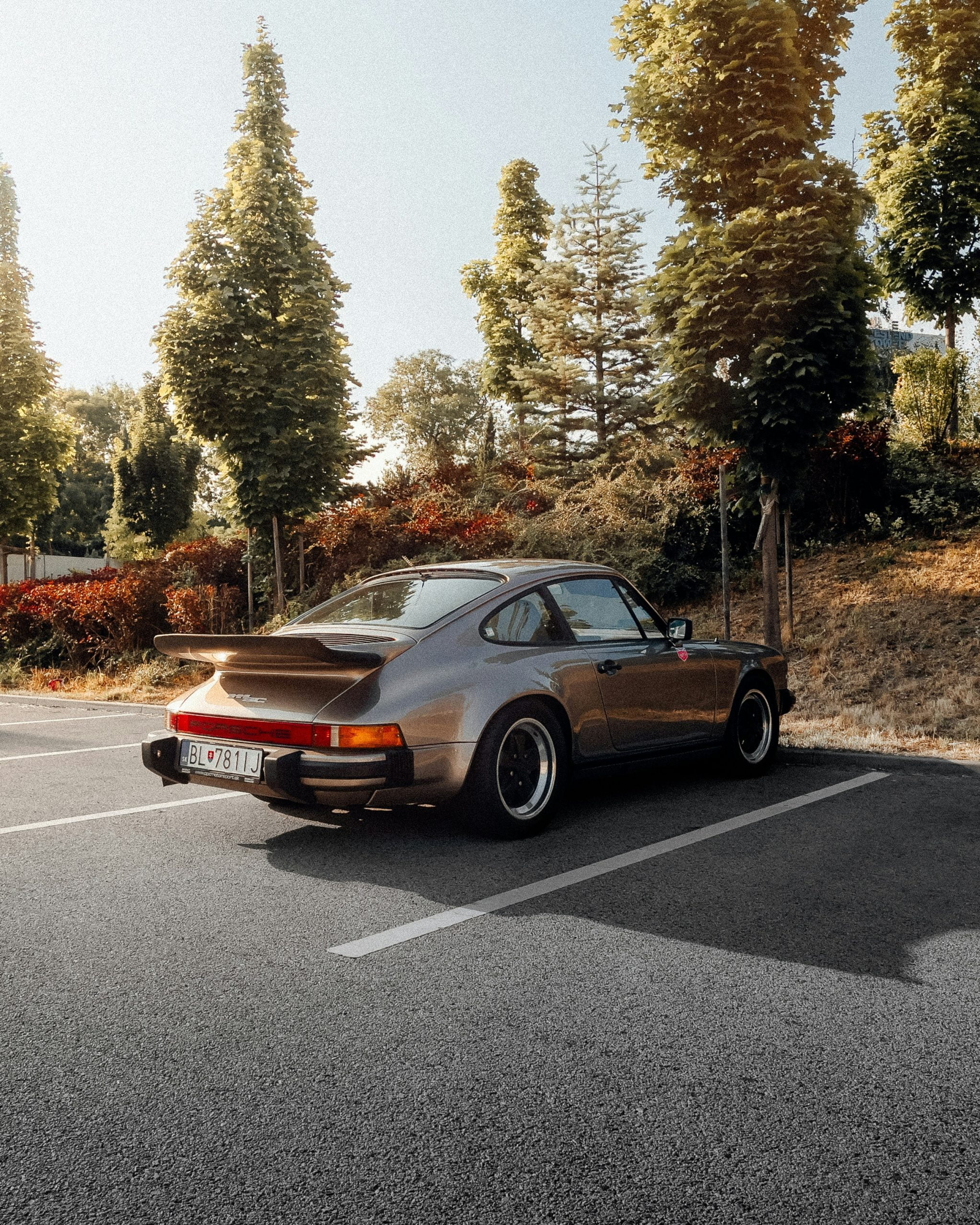1973 Porsche 911 Turbo (930)
In the early 1970s, the Porsche 911 was celebrated for its remarkable speed but also infamous for its demanding handling characteristics. Despite questions about its necessity, Porsche boldly introduced a turbocharger in 1975, resulting in the creation of the Porsche 930, also known as the 911 Turbo. During this period, it achieved recognition as a premier sports car, yet it also developed a reputation for being hazardous, earning the nickname “widow-maker” due to its pronounced turbo lag and propensity for sudden oversteer. The 930 quickly became one of the most iconic sports cars produced by Porsche.

The Porsche 930 featured significantly wider rear fenders compared to the standard 911, to accommodate the larger wheels and tires needed for better traction. One of the most distinctive features was the large rear spoiler, often referred to as the “whale tail,” which helped provide additional downforce and cooling for the engine. Additionally, the front bumper was redesigned with integrated fog lights and a larger air intake, enhancing both aesthetics and functionality.



The initial models of the 930 were equipped with a 3.0-liter flat-six turbocharged engine producing around 260 horsepower. This powerplant allowed the car to accelerate from 0 to 60 mph in under 5 seconds, making it one of the fastest cars of its era. The top speed for the early models was around 160 mph. In 1978, Porsche upgraded the engine to a 3.3-liter flat-six, increasing power to 300 horsepower. This enhancement not only improved performance but also addressed some of the reliability concerns of the earlier models. Later iterations saw further refinements that enhanced both performance and drivability. The top speed for these models increased slightly, reflecting the ongoing improvements. The early 930s were equipped with a 4-speed manual transmission. In the late 1980s, Porsche introduced a 5-speed manual transmission, which significantly improved performance and drivability. This new transmission allowed for better utilization of the engine’s power band and made the driving experience more engaging.


The 930 featured a revised suspension system to handle the increased power, with larger brakes and stiffer components. These modifications were essential for managing the car’s enhanced performance capabilities and ensuring safety and control. The turbocharged engine provided a sudden and intense boost in power, leading to a reputation for “turbo lag.” This characteristic made the car challenging to drive, especially for those unaccustomed to its unique power delivery. The handling required skill due to the rear-engine layout, but it was highly rewarding for experienced drivers. The 930’s driving dynamics demanded respect and precision, making it a thrilling yet demanding vehicle.


The 930 was available as a coupe and later as a cabriolet (convertible) or targa (with a removable roof panel). This variety allowed customers to choose a model that best suited their preferences and driving style. Production continued through the late 1980s, with each iteration bringing incremental improvements and maintaining the car’s status as a top-tier sports car. The Porsche 930 remains one of the most iconic sports cars ever produced. Its blend of raw power, distinctive styling, and demanding driving characteristics has cemented its place in automotive history. Enthusiasts and collectors continue to celebrate the 930 for its contribution to the Porsche legacy and its influence on the development of future high-performance vehicles.